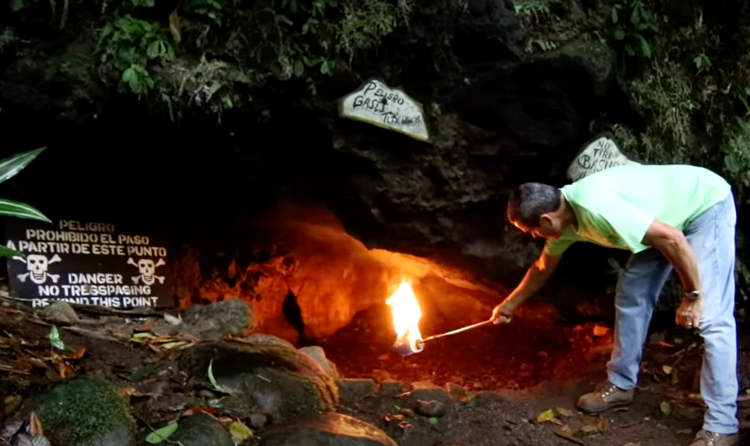The Recreo Verde tourist complex in Venecia de San Carlos, Costa Rica, is home to a tiny mountain cavern that has come to be known as The Cave of Death due to its ability to kill any creature that enters it.
Located on the edge of the Poas Volcano, la Cueva de la Muerte is only 2 meters deep and 3 meters long, which makes it a seemingly cozy refuge for insects, birds, and small animals looking for shelter. But appearances can be deceiving, as entering this tiny cavern results in an almost instant death. Although the tiny cave looks harmless to the naked eye, it is filled with carbon dioxide, a colorless, odorless, tasteless gas that also happens to be extremely toxic. To demonstrate just how lethal the Cave of Death actually is, local guides place a lit torch inside the cavern and it is extinguished instantly by the absence of oxygen and the high concentration of carbon dioxide.

No one really knows exactly where the carbon dioxide in the Cave of Death comes from, but a number of researchers concluded that the organic nature of the gas suggests that it is the result of mineral deposits subjected to high temperatures and pressures in the earth’s magma, where oxygen is absent. The cave’s location in the vicinity of an active volcano may also have something to do with the gas.
One thing is for certain, scientists have found that la Cueva de la Muerte produces about 30kg of carbon dioxide every hour.
The lethal properties of this tiny cavern were discovered by accident during the building stages of the Recreo Verde complex. One worker who got too close to the entrance started feeling sick, which led to a thorough investigation of the surroundings. Its deadly reputation made the Cave of Death become one of the few commercial caves where visitors do not go inside.
The Cave of Death features several signs warning people not to enter it if they value their lives, but its small size and narrow entrance also make it very difficult to access by humans. Also, the dense carbon dioxide (about 80 – 90 percent purity) usually stays on the bottom of the cave floor, making the place more deadly to small animals. They begin to asphyxiate moments after entering the cave.












